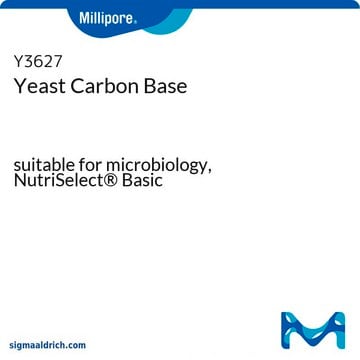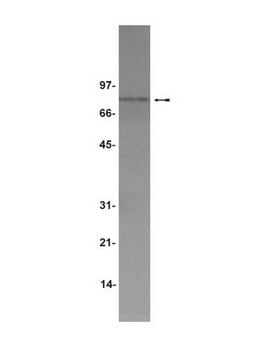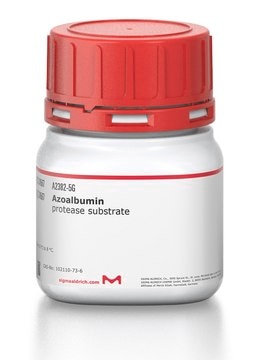07-095
Anti-PP2A-methylesterase/PME-1 Antibody
Upstate®, from rabbit
Sign Into View Organizational & Contract Pricing
All Photos(1)
About This Item
UNSPSC Code:
12352203
eCl@ss:
32160702
NACRES:
NA.41
Recommended Products
biological source
rabbit
Quality Level
antibody form
purified immunoglobulin
antibody product type
primary antibodies
clone
polyclonal
species reactivity
human, rat, mouse
manufacturer/tradename
Upstate®
technique(s)
western blot: suitable
isotype
IgG
NCBI accession no.
UniProt accession no.
shipped in
dry ice
target post-translational modification
unmodified
Gene Information
human ... PPME1(51400)
Specificity
Protein Phosphatase Methylesterase-1
Immunogen
A mixture of two nickel agarose-purified, His6-tagged, bacterial expressed human Protein Phosphatase Methylesterase-1 (PME-1) fragments (residues 225-302 and 277-387). These two fragments represent the carboxyl-terminal portion of the protein.
Application
Research Category
Signaling
Neuroscience
Signaling
Neuroscience
Research Sub Category
Neurotransmitters & Receptors
Neurodegenerative Diseases
Neurotransmitters & Receptors
Neurodegenerative Diseases
This Anti-PP2A-methylesterase/PME-1 Antibody is validated for use in IP, WB for the detection of PP2A-methylesterase/PME-1.
Quality
routinely evaluated by immunoblot on RIPA lysates from mouse 3T3 fibroblasts
Target description
44kDa
Physical form
0.1M Tris-glycine, pH 7.4, 0.15M NaCl, 0.05% sodium azide before the addition of glycerol to 30%
Format: Purified
Protein A chromatography
Storage and Stability
2 years at -20°C
Analysis Note
Control
Positive Antigen Control: Catalog #12-305, 3T3/A31 lysate. Add 2.5 μL of 2-mercapto-ethanol/100 μL of lysate and boil for 5 minutes to reduce the preparation. Load 20 μg of reduced lysate per lane for minigels.
Positive Antigen Control: Catalog #12-305, 3T3/A31 lysate. Add 2.5 μL of 2-mercapto-ethanol/100 μL of lysate and boil for 5 minutes to reduce the preparation. Load 20 μg of reduced lysate per lane for minigels.
Legal Information
UPSTATE is a registered trademark of Merck KGaA, Darmstadt, Germany
Disclaimer
Unless otherwise stated in our catalog or other company documentation accompanying the product(s), our products are intended for research use only and are not to be used for any other purpose, which includes but is not limited to, unauthorized commercial uses, in vitro diagnostic uses, ex vivo or in vivo therapeutic uses or any type of consumption or application to humans or animals.
Not finding the right product?
Try our Product Selector Tool.
Storage Class
10 - Combustible liquids
wgk_germany
WGK 1
Certificates of Analysis (COA)
Search for Certificates of Analysis (COA) by entering the products Lot/Batch Number. Lot and Batch Numbers can be found on a product’s label following the words ‘Lot’ or ‘Batch’.
Already Own This Product?
Find documentation for the products that you have recently purchased in the Document Library.
Single-pot enzymatic synthesis of Dicer-substrate siRNAs.
Guiley, KZ; Pratt, AJ; MacRae, IJ
Nucleic Acids Research null
Madhumathi Gnanaprakash et al.
Journal of Alzheimer's disease : JAD, 79(4), 1813-1829 (2021-01-19)
The serine/threonine protein phosphatase, PP2A, is thought to play a central role in the molecular pathogenesis of Alzheimer's disease (AD), and the activity and substrate specificity of PP2A is regulated, in part, through methylation and demethylation of its catalytic subunit.
Christina Ising et al.
Nature, 575(7784), 669-673 (2019-11-22)
Alzheimer's disease is characterized by the accumulation of amyloid-beta in plaques, aggregation of hyperphosphorylated tau in neurofibrillary tangles and neuroinflammation, together resulting in neurodegeneration and cognitive decline1. The NLRP3 inflammasome assembles inside of microglia on activation, leading to increased cleavage
Hye-Jin Park et al.
Annals of clinical and translational neurology, 3(10), 769-780 (2016-10-19)
Protein phosphatase 2A (PP2A) is a heterotrimeric holoenzyme composed of a catalytic C subunit, a structural A subunit, and one of several regulatory B subunits that confer substrate specificity. The assembly and activity of PP2A are regulated by reversible methylation
Ha Yin Lee et al.
Science signaling, 11(512) (2018-01-11)
Cancer cells increase glucose metabolism to support aerobic glycolysis. However, only some cancer cells are acutely sensitive to glucose withdrawal, and the underlying mechanism of this selective sensitivity is unclear. We showed that glucose deprivation initiates a cell death pathway
Our team of scientists has experience in all areas of research including Life Science, Material Science, Chemical Synthesis, Chromatography, Analytical and many others.
Contact Technical Service








